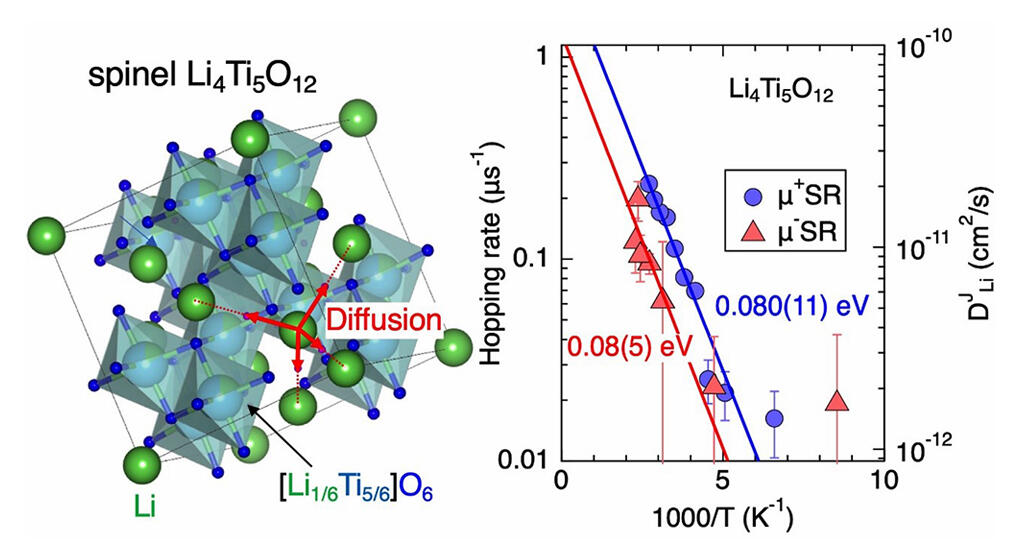A research group led by Assistant Professor Izumi Umegaki, Assistant Professor Shoichiro Nishimura, Assistant Professor Soshi Takeshita and Associate Professor Akihiro Koda of the Institute for Materials Structure Science, Inter-University Research Institute Corporation, High Energy Accelerator Research Organization (KEK), along with Associate Scientist Kazuki Ohishi and Science Coordinator Jun Sugiyama of the Comprehensive Research Organization for Science and Society (CROSS), Associate Professor Takehito Nakano of Ibaraki University, and Associate Professor Kazuhiko Ninomiya of the Institute for Radiation Sciences, Osaka University, and Professor Kenya Kubo of International Christian University, has studied the diffusion motion of lithium (Li) ions in spinel-structured Li4Ti5O12, which is being researched as a negative electrode material for solid-state lithium batteries, using the muon spin rotation and relaxation (μSR) method with the world's highest intensity positive and negative muon beams at the Japan Proton Accelerator Research Complex (J-PARC) Materials and Life Science Experimental Facility (MLF). The group succeeded in identifying that fluctuations of the internal magnetic field captured by the positive and negative muons were consistent, indicating that Li ion diffusion was taking place in the anode material. The activation energy of diffusion was found to be quite small, indicating that this is an excellent anode material.

Copyright © 2022, American Chemical Society
The research group conducted μ+SR measurements with positive muons at the S1 experiment area and μ-SR measurements with negative muons at the D1 experiment area at the J-PARC MLF to investigate the diffusion of lithium ions in Li4Ti5O12, a candidate anode material for solid-state lithium batteries. When they obtained data in the temperature range of 100-400K, they found that the fluctuation rate (ν) of the internal magnetic field observed in μ-SR increased when the temperature rose above 200K.
They determined the thermal activation energy to be 0.08 (5) eV. This result is consistent with the value obtained from the μ+SR measurement. This proved that the fluctuation of the internal magnetic field obtained by the μSR method using positive muons is due to the diffusion of Li. The self-diffusion coefficient of lithium ions was determined to be 8(2) x 10-12 /s per square centimeter at room temperature. This is consistent with previously reported values, but the small temperature dependence clearly indicated that the material is an excellent anode material.
This experiment has helped understand the diffusion phenomenon of Li ions within lithium-ion battery materials through integrated μSR, which uses positive and negative muons in combination. This reaffirmed the usefulness of the μSR method for understanding and evaluating the performance of battery materials.
"We obtained reproducible and reliable results," explains Assistant Professor Umegaki. "Considering the results of our ongoing experiments, we believe that muons are effective for measuring ion diffusion in lithium-ion battery materials. Moving forward, we would like to contribute to the development of next-generation high-performance batteries by promoting the application of operando measurements to measure ion diffusion in lithium-ion batteries during charging and discharging, and by promoting the application to sodium and potassium ion battery materials.
Journal Information
Publication: The Journal of Physical Chemistry C
Title: Negative Muon Spin Rotation and Relaxation Study on Battery Anode Material, Spinel Li4Ti5O12
DOI: 10.1021/acs.jpcc.2c02055
This article has been translated by JST with permission from The Science News Ltd.(https://sci-news.co.jp/). Unauthorized reproduction of the article and photographs is prohibited.




